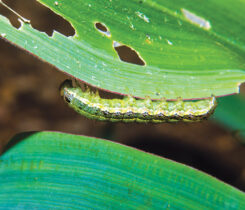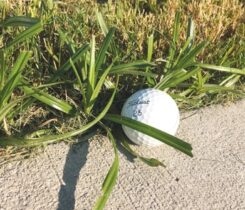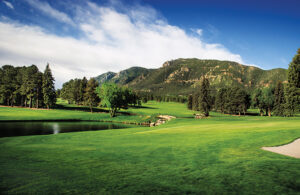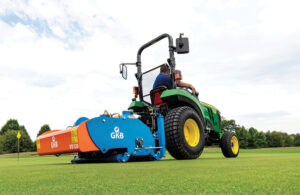Turf Pest of the Month: Get to know the Japanese beetle
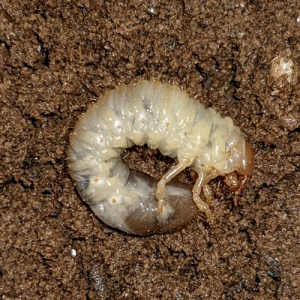
(Photo: David Held)
The Japanese beetle is a unique pest for superintendents to manage, says David Held, Ph.D., professor of entomology and chair of the entomology and plant pathology department at Auburn University.
The pest, commonly found in the east, has begun to spread West to states like Michigan and Wisconsin in what Held calls a forward-moving line. Held says, adding to the complexity of dealing with a new pest, Japanese beetle populations can come and go, seemingly at random.
“We don’t know what drives these patterns, but you’ll have a couple of years where there will be no problems at all with Japanese beetles,” he says. “And then we’ll go through a two- or three-year period where we have plague-like populations.”
Two pests in one
Held says Japanese beetles provide several issues for superintendents in their larval and adult stages.
“The larval stage, which damages turf, is active for eight to nine months a year, and the adults are active for roughly two months,” he says. “They cause damage in two different locations. The larvae damage the turf, and the adults feed on the flowers, foliage and other ornamental plants.”
Superintendents should look for Japanese beetle damage starting in late July all the way through September. According to Held, signs of damage from Japanese beetle larvae include irregular yellow patches caused by a loss of root mass.
Adult beetles will attack and feed on plant life like shrubs and other ornamental plants, according to Held.
“The adult damage starts from the top and goes down, making the foliage look like lace,” Held says. “The adult beetles feed on the material between the veins of the leaves.”
Cool- vs. warm-season turf
Held says superintendents with cool-season grasses will have an easier time spotting Japanese beetle damage in their turf than those with warm-season turf.
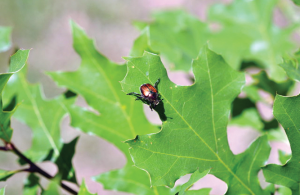
Japanese beetle larvae damage can be easier to spot in cool-season turf thanks to its slower root mass growth. (Photo: David Held)
“You can actually get some physical response from the grass above the ground,” Held says. “The cool-season grass will just roll right back like a carpet if you grab them because the turf isn’t putting out enough roots to outgrow the damage.”
Damage in warm-season grasses won’t roll back like cool-season varieties, according to Held.
“That won’t happen because of the stoloniferous root systems that they have,” he says. “They produce a lot more root mass which allows them to mask the damage much better.”
Held says that skunks and raccoons could also alert superintendents to Japanese beetle larvae within the turf. While that’s a potential warning sign, it’s not a surefire way to know.
“Superintendents might think, ‘Oh, I’ve got moles, so I must have grubs,’” he says. “They might not realize that moles feed on earthworms the same as they do on white grubs. So it would be an indication to go out and look more closely at those areas as opposed to a trigger to treat.”
Treatment
Held says there are several options for superintendents who seek long-term control of Japanese beetles.
“Something like chlorantraniliprole (Acelepryn, Syngenta) provides the ability to put out material and have it last for two or three months in the soil,” Held says. “There is quite a bit of good soil insecticides to use. There’s also the anthranilic diamides that have fairly long residuals.”
Held says there are some chemistries with shorter residuals ready for use in a pinch, like trichlorfon.
“If you find that you have varmints starting to dig and you want to get quick control of (Japanese beetle), you can apply something like (trichlorfon),” he says. “It will kill (the larvae) quickly and then be gone shortly after that.”









